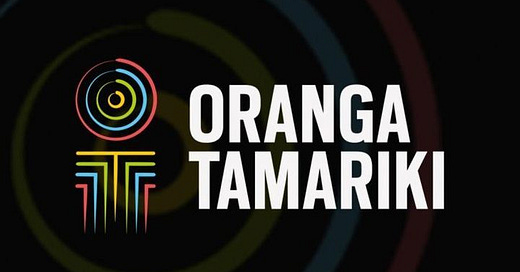More kids are getting hurt in State Care, we're all responsible for turning this around / A.J Hendry
A recent reported showed that the percentage of children harmed in state care has increased. These are our kids; we all have a responsibility to protect them.
The new Safety in Care report has shown an increase in children in the care of the state being harmed (from 5.6% of children in care to 9%).
When talking about kids in care, it's important to remember that these are children that the state has parental responsibility for.
And as the state represents us, that means these are all of our kids.
Whenever this conversation arises my concern is that our focus on OT and individual staff members distracts us from the wider issues contributing to children being unsafe and uncared for in the care system.
The lives of these kids are touched by multiple agencies, communities, and organizations. Whenever we hear stories of children being harmed, there are often multiple intervention points where different choices could have been made to ensure those children's safety.
One challenge we face as a community is that we are dealing with a poorly resourced social and community sector. Everyone is "busy", professionals -from teachers to social workers, to OT managers and community youth workers - are carrying high workloads, and often lack significant and necessary resources.
When we're talking about the care of vulnerable children, "busy" can be dangerous. No one goes to work to see kids hurt, but when you're in a constant state of crisis, running from one critical need to the next, practice slips, things are missed, and children get hurt.
We need to begin asking ourselves, what do our children need, and how do we ensure we provide the system with the resources it needs to ensure our kids are loved, cared and supported.
Personally, looking at the system as it is, I would be terrified to think of my children entering any part of it. And if it isn’t good enough for my kids, or your kids, it ain't good enough for any kids.
Another point the report raises is the number of children harmed by whānau in Return/Remain Home placements. This speaks of the poor support we provide whānau. This needs to be a focus for us. Yes we need to redesign and redevelop residences, however we can do so much more to ensure that we are supporting whānau to care for their own kids, providing them with the resources, support, care, therapy and training they need to be the best parents they can be.
One concern we hear a lot (both from parents of kids who've been taken into care and from kids themselves) is that whānau do not get the support they need to address what's going on in their lives and their environment and thus we fail to prepare them to care for their kids well.
Most children want to be with their whānau, and it is largely understood that a healthy whānau home is the best place for children. This means we need to be focusing on providing support for whānau, education, training, addressing environmental factors like poverty and housing insecurity, providing support for whānau dealing with their own complex trauma and mental ill health. If we strengthen and support our whānau, we will not just care for these kids, we will break generational cycles and strengthen our entire communities.
Last point on residences, both care and protection and justice, again it's easy to blame staff but the real problem is the system itself. We need to be absolutely clear that no one gets into this mahi to hurt children, or oversee environments where children get hurt. If you’re working for Oranga Tamariki, you got into that work because you wanted to make a difference. And yet, it doesn’t matter how passionate you are to make change for young people, if you don’t have the right training, managerial support, appropriate systems, and if the environment you’re operating in is not conducive to healing and the wellbeing of both kaimahi and tamariki, then you will be ill equipped to provide the support and care our children need. Staff require much greater training and support, and the system itself needs to be redesigned to reflect a child centred, youth development understanding and approach.
We can and must do much better by our kids. I fear that currently, we are not showing our children the manaakitanga or aroha they deserve.
If we are serious about seeing these statistics change, then we must look past this review, to the wider systems that touch and interact with the lives of our children.
We must ensure that at every point in the road, our community has the resources they need to care for our children well.
And we must take seriously the responsibility we all have, to ensure that these kids, our kids, are cared for, loved, and supported by their state parent.
The statistics in this report are not acceptable.
These are our kids.
And we’re all responsible.
A.J. Hendry is a Laidlaw College graduate, and a Youth Development Worker and rangatahi advocate, working in the Youth Housing and Homelessness space. He leads Kick Back, a service supporting rangatahi experiencing homelessness and is also an advocate working collectively to end youth homelessness in Aotearoa. He is also the curator and creator of When Lambs Are Silent.






Thanks Aaron for this considered and compassionate article about this important issue. This perspective needs to be heard by a wider audience. Suggest you approach RNZ for a interview!
This is so pertinent Aaron and very well expressed .